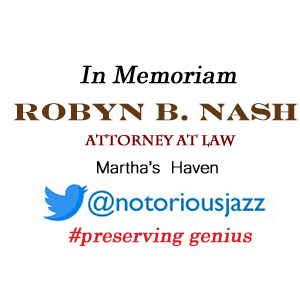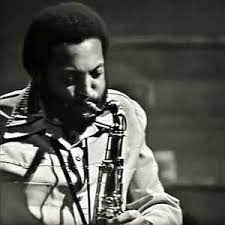
Three Wishes
Harold Vick was asked what his three wishes would be and he told Pannonica this:
-
-
“To be able to play my instrument.”
-
“Some money.”
-
“And help a chick. You know: We have a common understanding!”
-
More Posts: flute,history,instrumental,jazz,music,pannonica,saxophone,three,wishes
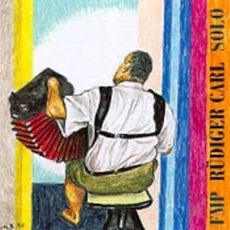
Daily Dose Of Jazz…
Rüdiger Carl was born on April 26, 1944 in Goldap, Poland ( formerly East Prussia) and has been involved in improvised music since 1968. He recorded his first record in 1972 and then began playing with a wide range of musicians including Arjen Gorter, Makaya Ntshoko, Louis Moholo, Maarten van Regteren Altena, Tristan Honsinger, Johnny Dyani and Han Bennink.
He maintains a long-standing partnership with Irene Schweizer that began in 1973 and continues to the present day. For a three year period, from 1973 to 1976 Carl was a member of Globe Unity Orchestra. He started giving solo performances in 1977 and the following year started two other long-term professional partnerships, with Sven-Åke Johansson and Hans Reichel.
Rüdiger’s most striking change in improvised music came when he gave up the saxophone and began performing with the accordion in duets with Hans Reichel. Though he continued to play the two instruments virtually side-by-side, adding clarinet to his arsenal, recorded Vorn which featured a version of the McCartney tune Those Were The Days. The COWWS Quintet was formed, continuing his musical relationship with Schweizer along with Philipp Wachsmann, Jay Oliver and Stephen Wittwer.
In addition to the COWWS, he performs with the Canvas Trio, in duos with Mayo Thompson of the Red Crayolas and Joëlle Léandre. During the Eighties he organized concerts of Musik im Portikus and beginning in 1994 has led the F.I.M. Orchester in Frankfurt/M.
Accordionist Rüdiger Carl is also an arranger and composer and continues to record and perform.
More Posts: accordion,arranger,bandleader,clarinet,composer,history,instrumental,jazz,music
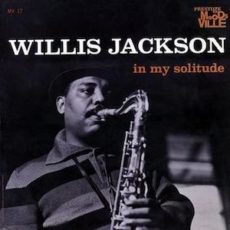
Daily Dose Of Jazz…
Willis “Gator” Jackson was born on April 25, 1928 in Miami, Florida and educated at the University of Miami. In 1948 he joined the Cootie Williams band as a teenager, and was part of it on and off until 1955.
Under his own name, Willis Jackson and His Orchestra, he recorded various rhythm-and-blues instrumentals for Atlantic Records. His most famous record for Atlantic is Gator’s Groove in 1952, with Estrellita as the B-side.
He toured as leader of the backing band for singer Ruth Brown. Publicly they were married, but privately they never were but lived together from 1950 to 1955. Joining Prestige Records in 1959, he made a string of albums with Pat Martino, Brother Jack McDuff, and Johnny “Hammond” Smith among many others. He also recorded for Atlantic, Muse, Trip, Big Chance, Verve, and Argo record labels.
Tenor saxophonist Willis “Gator” Jackson transitioned in New York City one week after heart surgery on October 25, 1987 at the age of 55.
More Posts: bandleader,history,instrumental,jazz,music,saxophone
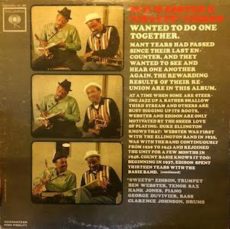
Requisites
Wanted To Do One Together ~ Ben Webster and Sweets Edison | By Eddie Carter
Benjamin Francis Webster and Harry “Sweets” Edison were two of jazz’s most beloved and respected musicians. Ben was affectionately known as “The Brute” for his sometimes coarse, harsh, or rough sound by his Ellington bandmates. However, he could also express deep feelings on any ballad or standard with a quiet intensity that always amazed fans listening to one of his albums or during his live performances. Webster was also an essential part of Duke Ellington’s orchestra before having a successful solo career. Johnny Hodges was a huge influence on Ben, and he credits the altoist with teaching him how to play the saxophone.
Harry was one of the most sought-after musicians in jazz and became a proficient trumpet accompanist and soloist for nearly twenty-five years. “Sweets” performed with Count Basie, toured with the Jazz at The Philharmonic All-Stars, and led his own orchestra. He also played in bands led by Gil Fuller, Dizzy Gillespie, Quincy Jones, Buddy Rich, and Shorty Rogers. Lester Young gave him the nickname “Sweets”, and his artistic proficiency and willingness to develop as jazz itself progressed made him one of the best trumpet players ever. Edison also possessed a bright, buoyant sound that could also be soft-spoken and serene.
In 1962, the two friends wanted to record an album together. The joyous result of their collaboration is Wanted To Do One Together (Columbia CL 1891/CS 8691), this morning’s choice from the library. The front line is fortified by Hank Jones on piano, George Duvivier on bass, and Clarence Johnson on drums. My copy used in this report is the original Mono album. Ben Webster’s Better Go opens Side One with a bouncy, upbeat melody by both horns. “Sweets” is off and running with an exhilarating muted performance. George delivers an enjoyable statement next, then Ben provides some enchantingly melodic lines on the third reading. Hank injects some vigorous passion into the finale ahead of the reprise and close.
Up next is George and Ira Gershwin’s evergreen from the musical, Funny Face (1928), How Long Has This Been Going On? Ben makes this song his own as if the duo wrote it, especially for him. After a soft duet introduction by the pianist and tenor man, the ensemble states the theme. As the sole horn and featured soloist, Ben tells an intimate story of delicacy and sensitivity in a tender performance. The trio backs him with elegant groundwork into a dainty climax. Harry Edison’s Kitty strolls casually into view on the ensemble’s mischievous theme. “Sweets” switches to a mute for the easy-going opening statement, then Ben displays a cheerfully playful personality next. Hank follows with a leisurely walk on the closing chorus that sends the kitty sauntering out of the room as the first side ends.
My Romance by Richard Rodgers and Lorenz Hart begins Side Two with a lovely introduction by Hank. Ben, George, and Clarence join him for a respectfully polite and nostalgic melody of sensual beauty. The saxophonist continues with a pretty performance that’s so deeply moving, even if you’re intimately acquainted with this song, you’ll feel as if you’re hearing it for the very first time. The beat moves back to mid tempo on the Ben Webster original, Did You Call Her Today? After the rhythm section’s introduction, both horns deliver the melody with a relaxed attitude. “Sweets” opens with a cheerfully pleasant performance. Ben keeps the beat alive with flawless execution in the next reading. Hank swings smoothly on the finale preceding the quintet’s perky ending.
Embraceable You by George and Ira Gershwin is one of their prettiest songs from the Broadway musical, Girl Crazy (1930). “Sweets” is the only horn featured here and his opening chorus with Hank is an oasis of calm and serenity. George and Clarence come in to complete the melody, then “Sweets” beautifully renders the song’s only solo into a tenderhearted ending. The album was produced by Mike Berniker and recorded at Columbia 30th Street Studio. The sound quality is absolutely amazing with a stunning soundstage surrounding your sweet spot. If you’re a fan of Ben Webster or Harry “Sweets” Edison, I offer for your consideration Wanted To Do One Together. It’s an album with tight musicianship and marvelous music that belongs in every jazz library and pays big dividends with every listen!
~ My Romance, Embraceable You – Source: JazzStandards.com ~ How Long Has This Been Going On? – Source: Wikipedia.org © 2022 by Edward Thomas Carter
More Posts: choice,classic,collectible,collector,history,instrumental,jazz,music,saxophone,trumpet
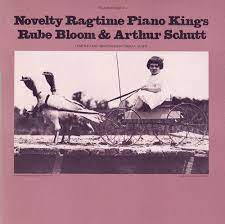
Daily Dose Of Jazz…
Reuben Bloom was born April 24, 1902 in New York City, New York to Jewish parents. During the 1920s he wrote many novelty piano solos, recorded for the Aeolian Company’s Duo-Art reproducing piano system various titles including his Spring Fever. His first hit came in 1927 with Soliloquy; his last was Here’s to My Lady in 1952, which he wrote with Johnny Mercer. In 1928, he made a number of records with Joe Venuti’s Blue Four for OKeh, including five songs he sang, as well as played piano.
He formed and led a number of bands during his career, most notably Rube Bloom and His Bayou Boys, which recorded three records in 1930. The Bayou Boys consisted of Benny Goodman, Adrian Rollini, Tommy Dorsey, Mannie Klein and Frankie Trumbauer in the Sioux City Six.
His I Can’t Face the Music, Day In Day Out, Fools Rush In (Where Angels Fear To Tread) and Give Me The Simple Life has become a part of the Great American Songbook and jazz standards.
During his career, he worked with many well-known performers, including those mentioned above and Ruth Etting, Stan Kenton, Jimmy Dorsey and collaborated with a wide number of lyricists, such as Ted Koehler, and Mitchell Parish.
Pianist, arranger, bandleader, recording artist, vocalist, and author Rube Bloom published several books on piano method before he transitioned on March 30, 1976 in his home city.
More Posts: arranger,author,bandleader,composer,history,instrumental,jazz,music,piano,vocal





